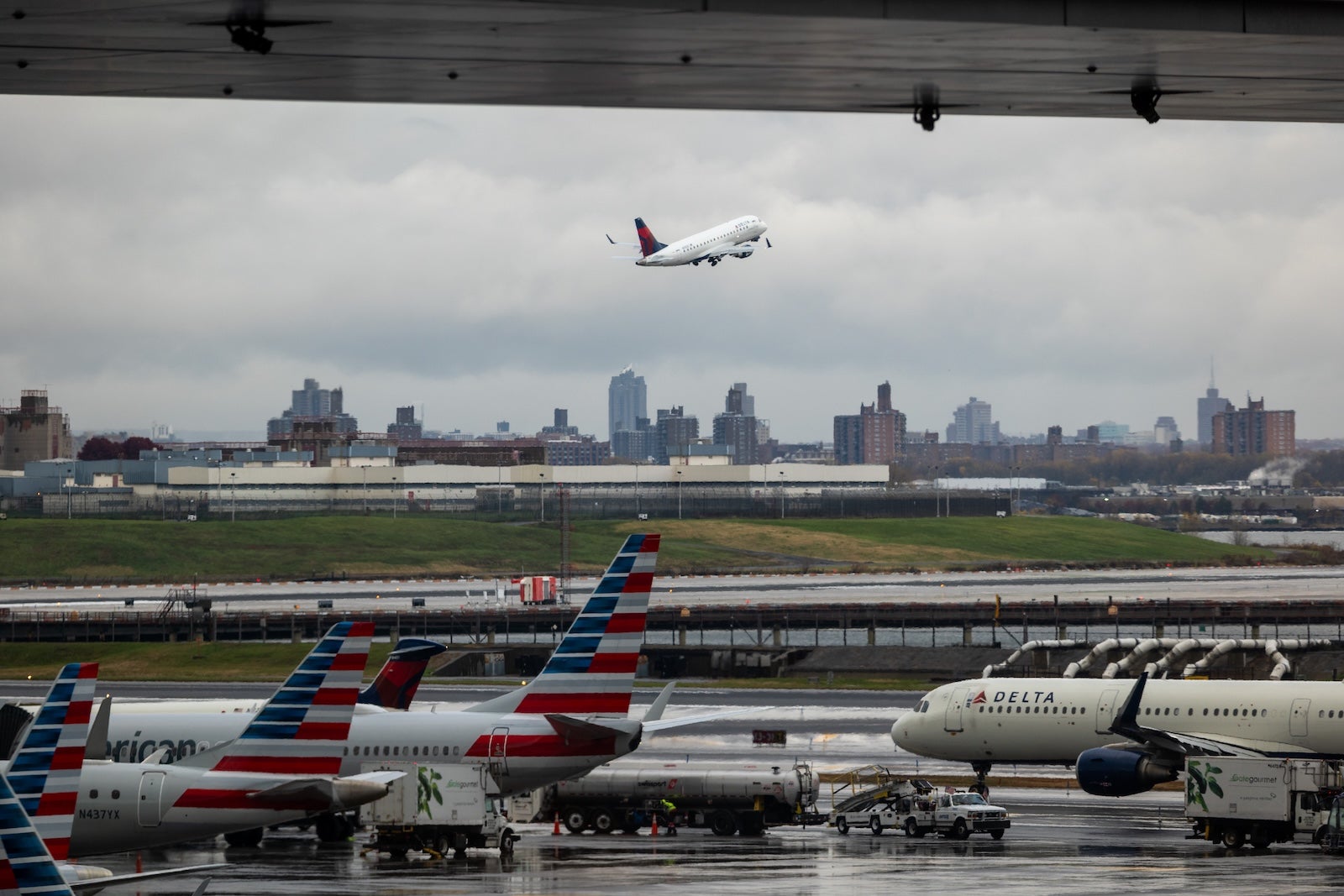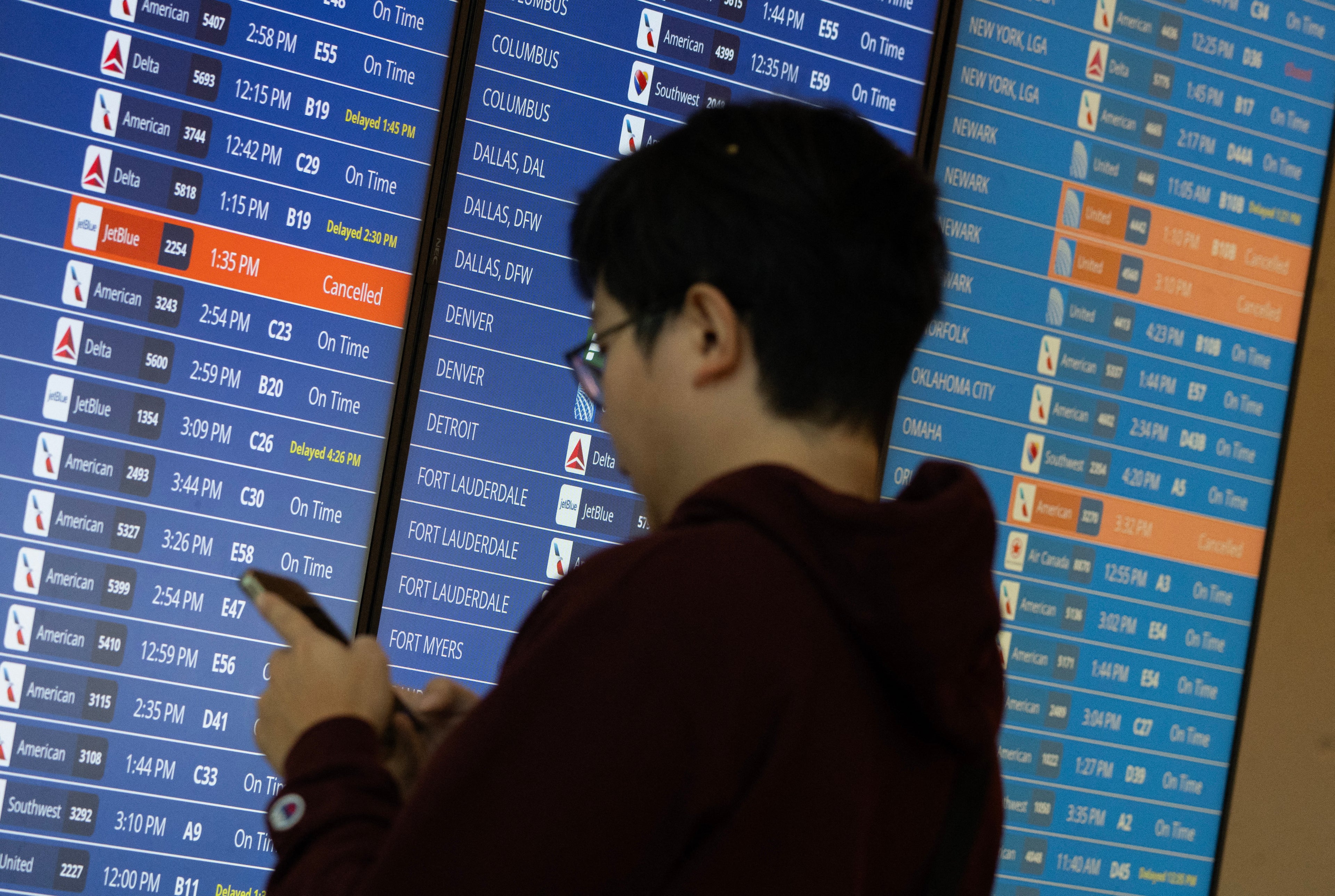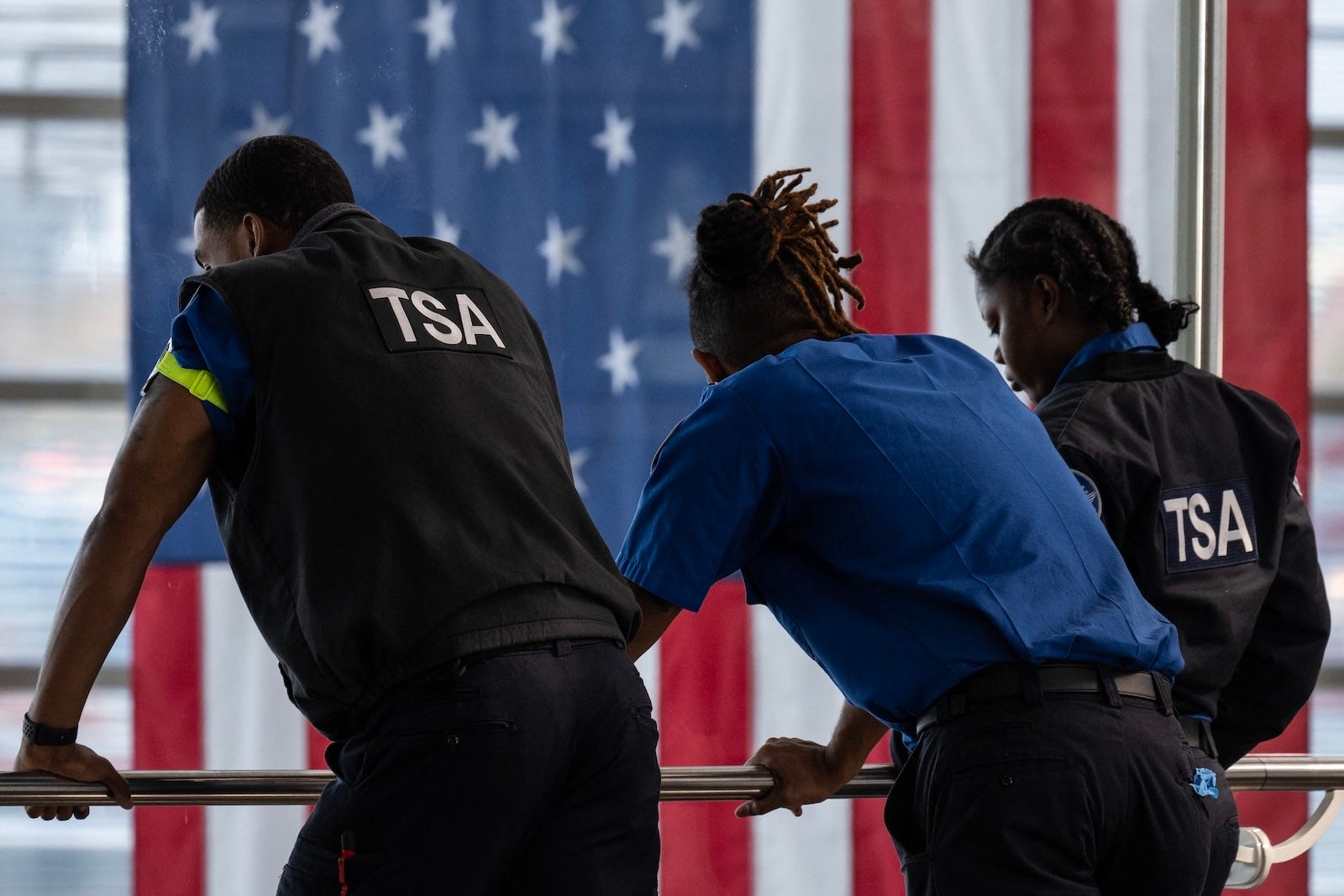The federal government appears to be on the cusp of reopening after a successful Wednesday evening vote on Capitol Hill.
Now, the race is on to get air travel back on track, with just over a week to go until the unofficial start of the Thanksgiving travel rush — and the stakes are high.
Airlines are expecting to fly a record-setting 31 million passengers between Nov. 21 and Dec. 1. It’s also quite possible the Sunday after Turkey Day could break the record for the busiest day ever at U.S. airports.
But after tens of thousands of flight cancellations and delays over the past week, the key question remains: Will holiday travel run smoothly, or will travelers run into a shutdown hangover at airports?
“It’s not a light switch,” cautioned former airline pilot Shye Gilad, professor at Georgetown University’s McDonough School of Business. “I still think it’s going to be a more-challenging-than-normal travel season.”
Still, with flight cancellations and delays on the decline and critical aviation workers set to get paid, there’s new optimism the worst air travel disruptions could be behind us.
“Reopening the government will allow U.S. airlines to restore their operations ahead of the busy Thanksgiving holiday,” a trade group for the largest airlines said in a statement late Wednesday.
What it will take to get air travel back on track
A few key factors will determine how fast air travel returns to normal.
FAA flight limitations
For starters, the Federal Aviation Administration still has to decide when to end mandatory flight restrictions at dozens of the nation’s busiest airports.
Reward your inbox with the TPG Daily newsletter
Join over 700,000 readers for breaking news, in-depth guides and exclusive deals from TPG’s experts
As of Wednesday, airlines were still required to cancel 6% of flights at 40 major hubs. That restriction will remain in place Thursday, fueling hundreds of flight cancellations.
However, in an encouraging sign late Wednesday, the U.S. Department of Transportation said it would not expand those restrictions. The FAA had previously planned to increase cancellations to 8% of departures on Thursday, and 10% beginning Friday.
Now, the required cuts will remain at 6% of flights.

Those limitations were meant to ease the burden on air traffic controllers, who called out of work in large numbers last weekend after weeks without a paycheck.
Air traffic controller staffing
How soon can airlines return to a full schedule? “It depends on controllers coming back,” Transportation Secretary Sean Duffy said this week.
Things seem to be headed in the right direction. On both Tuesday and Wednesday this week, the FAA reported just a small handful of “staffing triggers” at air traffic control facilities. On Saturday, there were 81, according to the U.S. Department of Transportation.
Cancellations and delays are already dropping
Not coincidentally, the number of flight delays and cancellations dropped for the third straight day on Wednesday, FlightAware showed.
That improvement came as controllers learned they’d get paychecks within 48 hours of the government reopening — something aviation sector leaders saw as a key step to getting staffing (and flights) back up to speed.

How will airlines rebound?
Much of the burden is now on airlines to bounce back after carriers had to make sweeping, sudden flight reductions this past week — upending carefully-crafted departure schedules in the midst of the shutdown chaos.
A key factor for Thanksgiving: “How soon will the airlines be able to disentangle their schedules to restore connectivity,” said Michael McCormick, air traffic control expert at Embry-Riddle Aeronautical University.
“If the shutdown ends this week,” McCormick had predicted, “The airlines will, most likely, be able to restore connectivity prior to the Thanksgiving push.”

Airlines were optimistic.
“I think you’ll be as close to normal as you can get by Friday-Saturday,” Delta Air Lines CEO Ed Bastian said Wednesday on CNBC.
What passengers should expect
In the coming days, I expect you’ll start to see airlines winding down flexible travel waivers they put in place during the shutdown, which gave travelers more freedom to change their tickets or cancel and get a refund.
How long those lenient policies last will likely depend on how long the FAA’s flight restrictions remain in place.
As for travelers with Thanksgiving trips booked, let’s run down a few other quick-hit tips:
Able to change? Fly in the morning
If your ticket allows changes and you have some flexibility, I’d aim to fly first thing in the morning, if possible. No matter the time of year, we tend to see travel disruptions mount as the day goes on.
Know your mobile app backward and forward
Start familiarizing yourself now with your airline’s mobile app so that you’re prepared to take quick action and rebook yourself if any trouble arises.
This is key to getting a seat on another flight when delays and cancellations pop up.
Read more: Flight canceled or delayed? Here’s what to do next
Which travel days will be busiest?
If you’re hoping to beat the crowds, returning home from Thanksgiving a little early (either on Black Friday or on Saturday, Nov. 29) could be your best bet.
Airlines expect Sunday, Nov. 30, and Monday, Dec. 1, will be the two busiest days of this holiday rush.

Keep in mind, the Sunday after Thanksgiving last year was (at the time) the busiest day ever at U.S. airports.
Plan for the TSA lines
If you are flying on those days, you’ll likely want to factor that in when planning how early to get to the airport.
The good news: once the government is fully open again, you should be able to use the MyTSA app to check real-time and expected security wait times. The app wasn’t reliable during the shutdown, but should be up and running again by the holiday rush.

TSA PreCheck and Touchless ID
If you’re a TSA PreCheck (or Global Entry) member, make sure your Known Traveler Number is attached to your reservation, so that TSA PreCheck will show up on your boarding pass.
Read more: What to do if a boarding pass isn’t marked TSA PreCheck
And if you’re flying out of an airport offering the new TSA PreCheck Touchless ID program, opt into that fast-tracked program through your airline profile.
Keep the lines running smoothly!
Of course, you’ll also want to do your part to keep the lines moving fast, packing with the TSA’s 3-1-1 liquids rules in mind. The good news? This will be the first holiday season when no travelers have to remove their shoes at checkpoints.
The top holiday 2025 travel tip
And, finally, after a chaotic and stressful few weeks for all employees at airports, Gilad suggested having some grace for airline, security and airport workers as one of his top holiday 2025 tips.
“There’s those things you can do to reduce your risk. Fly early, look for longer connection times. But also, a lot of it is, too, your attitude. Be kind to these people,” Gilad said, offering his take on how travelers might want to approach this particular Thanksgiving travel window.
“If I’m going to give this a shot,” he said, “I should expect that things are going to be challenging and I should be thinking about how I can help.”
Related reading: